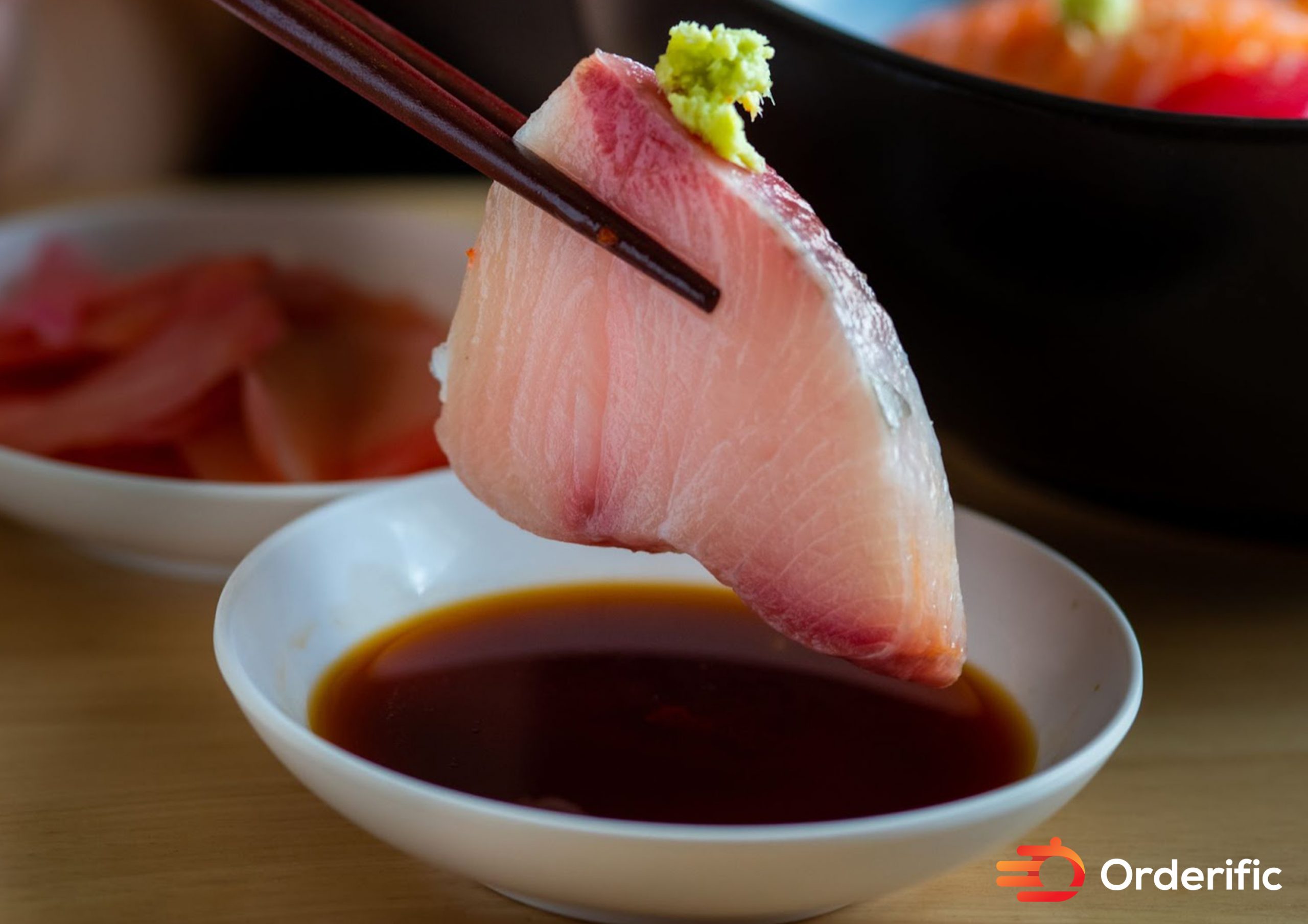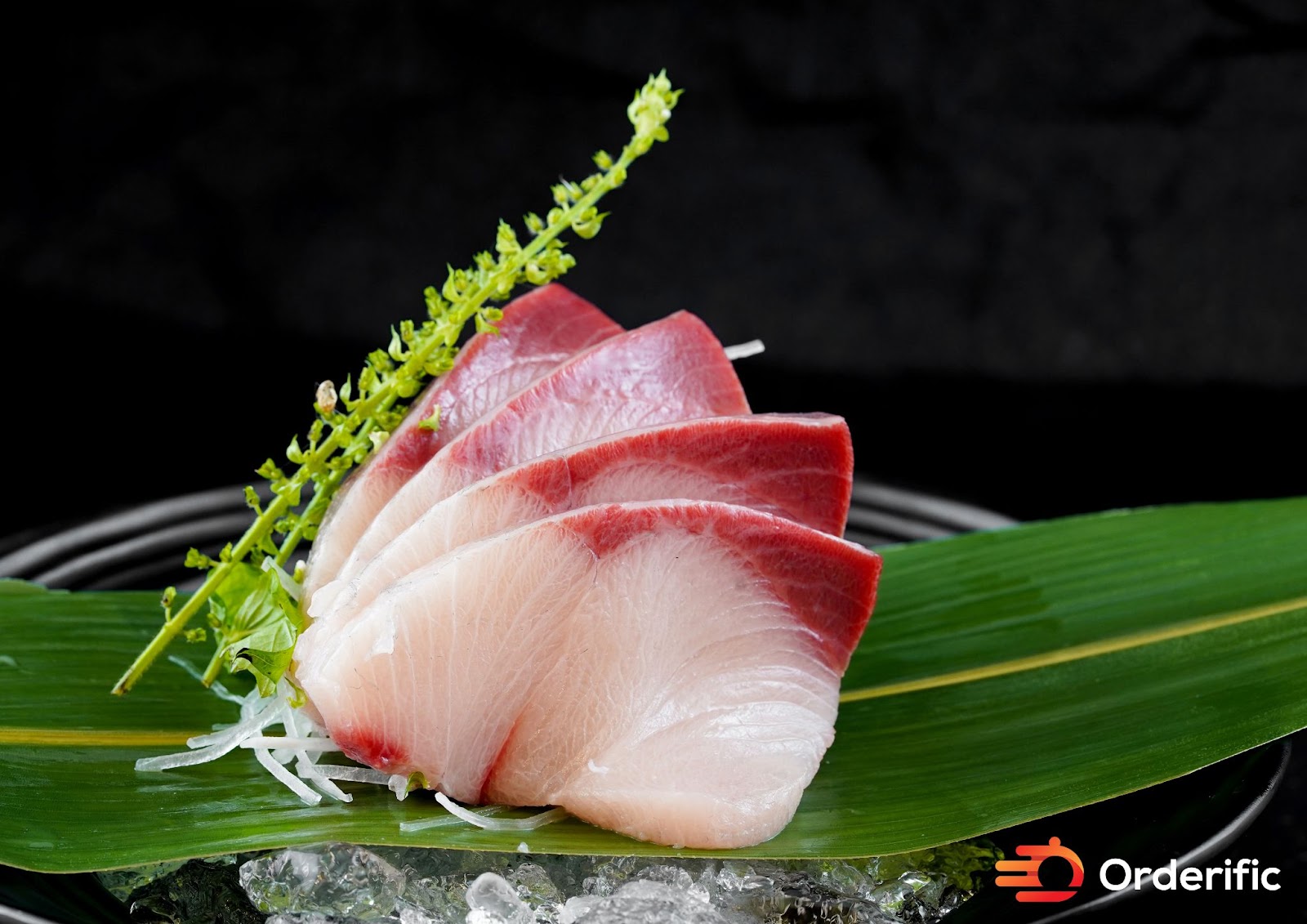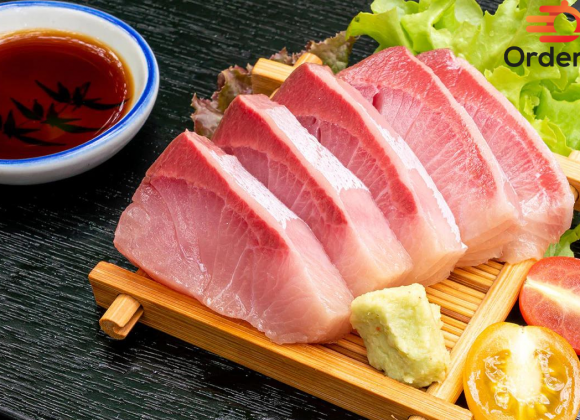Introduction
When fully grown, welcome to the fascinating world of hamachi fish, also known as buri. This popular fish is a star in Japanese cuisine, often featured in sushi restaurants and bars worldwide. The Raw yellowtail fish is coveted for its rich flavor and texture, especially as sashimi-grade fish. Its high Omega-3 fatty acids make it a nutritious choice among seafood lovers. In the Pacific Ocean, where this species is commonly found, it is known as Seriola quinqueradiata. However, the taste of buri truly shines when seasoned with ingredients like sesame oil, sesame seeds, lemon zest, and daikon radish. For those who prefer their seafood cooked, buri can also be served with a drizzle of olive oil and a sprinkle of lemon juice.
Only some can compete with hamachi’s buttery texture and rich flavor of sushi-grade fish. This fatty fish remains a firm favorite whether served raw in sashimi, rolled into sushi with rice, or incorporated into other Japanese dishes. So let’s dive deeper into the nutritional facts of this popular fish and explore the best ways to enjoy it.
The Nutritional Benefits Of Hamachi Fish: Why It’s Good For You
- Rich in Omega-3 Fatty Acids: Buri, or raw yellowtail fish, is an excellent source of Omega-3 fatty acids, which are beneficial for heart health. These fatty acids also support brain health and have anti-inflammatory properties.
- High-Quality Protein: Like most seafood, hamachi fish provides high-quality protein essential for muscle growth and repair. Its protein content is comparable to that of popular fish like salmon.
- Source of Essential Minerals: Hamachi is a good source of selenium and iodine, minerals that are essential for thyroid function and maintaining a healthy immune system.
- Healthy Fats: This sashimi grade fish is known for its buttery texture and rich flavor due to its fat content. These are healthy fats, similar to those found in olive oil and sesame oil.
- Flavourful with Few Calories: When served as sashimi or sushi grade fish, buri can have a rich flavor without being high in calories. This fish’s flavor can be further enhanced when seasoned with ingredients like sesame seeds, lemon zest, and daikon radish.
- Versatile in Japanese Cuisine: Buri is cherished in Japanese dishes. When cooked, the flavors can be elevated with a drizzle of lemon juice or sesame oil. Paired with rice, it can be rolled into a sushi or served raw as yellowtail sashimi in sushi restaurants and sushi bars.
Rest assured, when you’re enjoying this popular seafood, whether it’s in a sushi bar or home, you’re not just savouring its rich flavour but also reaping numerous health benefits. Just remember, to avoid foodborne illness, it’s vital to consume sashimi-grade fish from reputable seafood suppliers only.

The Flavor Profile Of Hamachi Fish: Mild And Versatile
Hamachi fish, or Buri, possesses a unique flavor profile that makes it a standout in the world of seafood. Its taste can be described as mild yet rich, with a subtle sweetness that complements a wide range of dishes. Its texture is buttery and smooth, melting almost like butter in your mouth, especially when it’s served as sashimi. This is a quality that is highly appreciated by sushi and sashimi aficionados. With its versatility, Buri can be paired with various ingredients without overpowering them, making it ideal for sushi and sashimi presentations.
Whether it’s drizzled with a bit of citrusy lemon juice, a touch of sesame oil, or paired with the crunchiness of daikon radish, the distinct flavor of hamachi fish always shines through. As with all seafood, the key to bringing out the best in Buri is freshness. To fully appreciate the flavor of this fish, it is recommended to source it from reputable suppliers that guarantee the freshness and quality of their seafood.
How To Cook Hamachi Fish: Tips And Recipes For Delicious Meals
Cooking Hamachi: Key Considerations
- Maintain Freshness: As with all seafood, freshness is crucial when it comes to buri. Always source your fish from reputable suppliers to ensure the best flavor.
- Versatile Preparation: Hamachi, or buri, can be prepared in a variety of ways. It can be served raw as sashimi or sushi, seared, or grilled.
- Seasoning: The mild flavor of buri pairs well with many ingredients. Consider using sesame oil, sesame seeds, lemon zest, and daikon radish for seasoning.
Simple Hamachi Sashimi Recipe
- Ingredients: You’ll need fresh, sashimi-grade hamachi, wasabi, soy sauce, and pickled ginger.
- Preparation: Start by ensuring the hamachi fish is at the peak of its freshness. Rinse the fish and pat it dry.
- Slicing: Using a sharp knife, carefully slice the hamachi into thin, even slices. Aim for a thickness of about 1/8 inch.
- Serving: Arrange the slices on a plate. Serve with wasabi, soy sauce, and pickled ginger on the side. Enjoy this delicious sushi-grade hamachi at its simplest and most elegant.

Sourcing And Sustainability Of Hamachi Fish: What To Look For When Buying
Hamachi fish, also known as buri, is not only a delightful treat for the palate, but it’s also a sustainably sourced seafood option. When purchasing hamachi, it’s crucial to consider its source; sustainability should be a primary concern. Reputable suppliers often provide details about where and how the fish was caught or farmed.
Aquaculture, or fish farming, has become a sustainable method for producing hamachi, helping to protect wild fish populations. Farm-raised hamachi are often fed a controlled diet, resulting in a consistently high-quality product. These farming practices also provide a year-round supply of this popular seafood.
That said, wild-caught hamachi is still a viable option, as long as it’s harvested responsibly. Look for hamachi that has been line-caught, a method that minimizes the bycatch of non-target species.
To ensure you’re making a sustainable choice, look for certification labels such as the Marine Stewardship Council (MSC) or Aquaculture Stewardship Council (ASC). These labels indicate that the fish has been sourced adhering to strict environmental and sustainability standards.
Remember, by selecting sustainably sourced hamachi, you’re not just satisfying your taste buds, but also contributing to the health of our oceans and the longevity of seafood populations for generations to come.
Conclusion
In conclusion, hamachi fish, also known as buri, is a remarkable seafood that not only titillates the taste buds with its unique, rich flavor, but also confers numerous health benefits due to its Omega-3 fatty acids, high-quality protein, and essential minerals. Whether you enjoy it raw as sashimi, rolled into sushi, or cooked, buri is a versatile ingredient that can enhance a myriad of dishes. By practicing sustainable sourcing, you can relish this gourmet delight while also contributing to the health of our oceans and seafood populations. Ready to taste the difference of farm-raised or responsibly wild-caught buri in your next culinary creation? Schedule a demo with Orderific today and discover how we can bring this delicacy to your doorstep with our focus on quality seafood and sustainability.
FAQs
What is hamachi fish?
Hamachi fish, also known as Buri, is a type of yellowtail fish popular in Japanese cuisine, particularly in sushi and sashimi.
Where is hamachi fish typically found?
Hamachi fish is typically found in the Pacific Ocean.
What are the nutritional benefits of hamachi fish?
Hamachi fish is rich in Omega-3 fatty acids, high-quality protein, and essential minerals like selenium and iodine.
What is the flavor profile of hamachi fish?
Hamachi fish has a mild, rich flavor with a buttery texture.
How is hamachi fish typically prepared?
Hamachi fish can be prepared raw as sashimi or sushi, or it can be cooked by grilling or searing.













